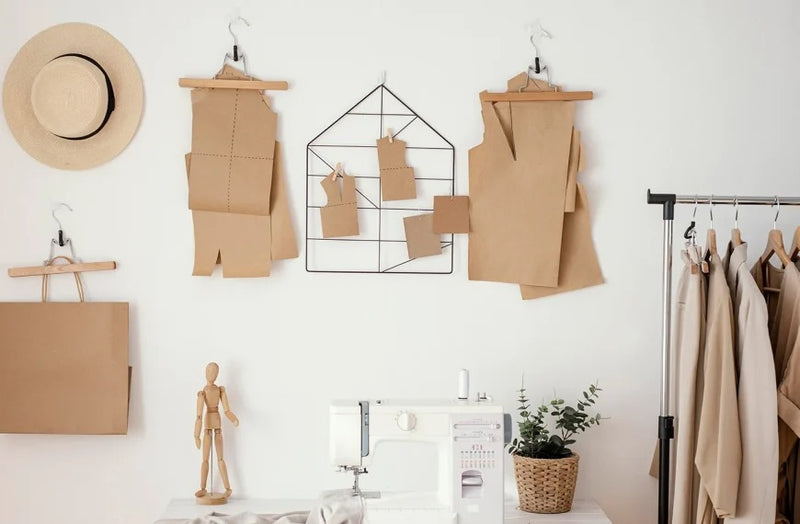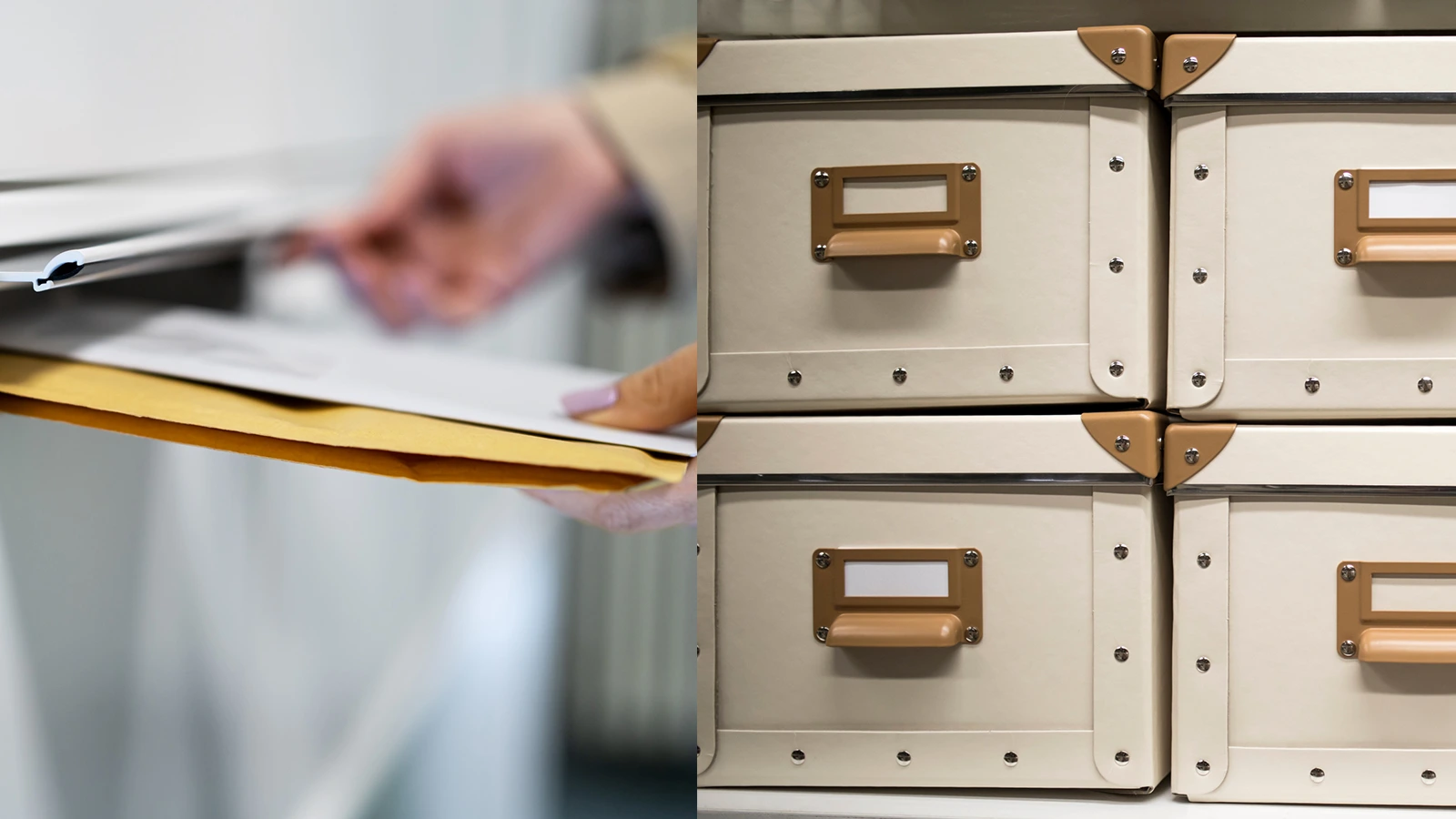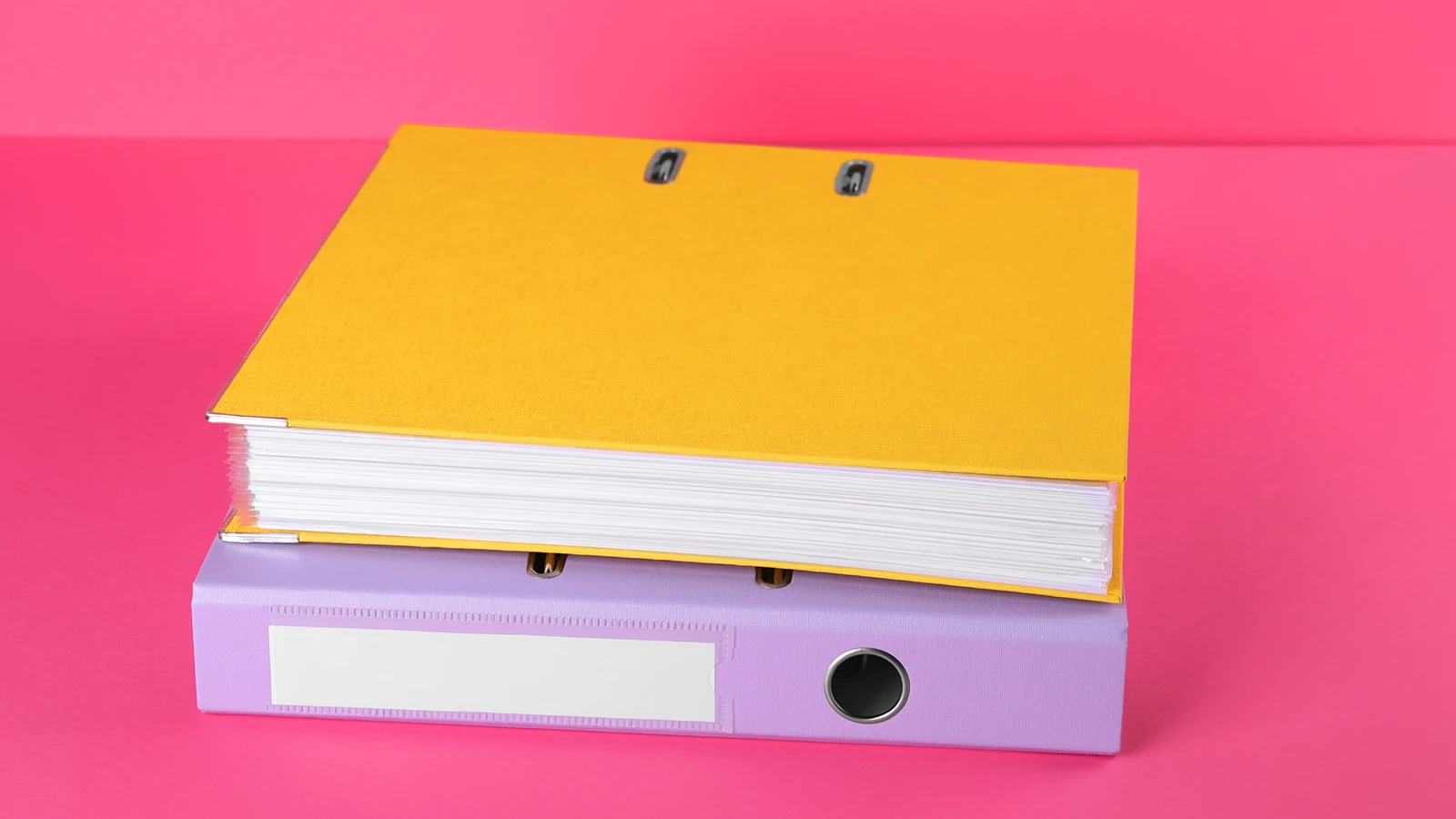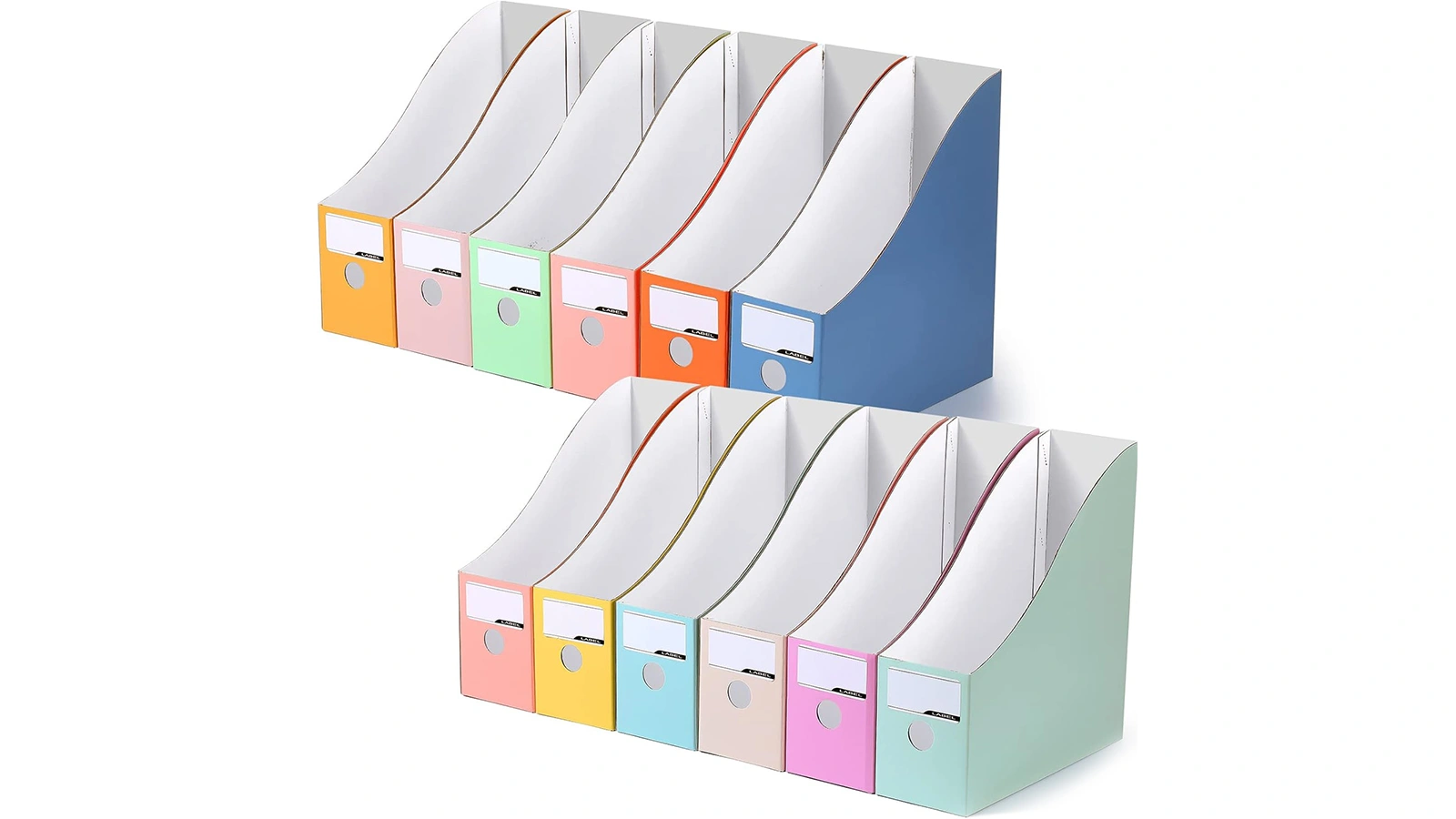
Are you tired of searching through piles of paper and fabric scraps to find that one sewing pattern you need? Fret no more, my fellow crafters! In this article, we‘ll explore how to store sewing patterns with both style and efficiency.
Say farewell to the days of lost templates and wrinkled instructions scattered around your sewing room like confetti. With smart storage solutions, your patterns will be neatly tucked away and ready for your next creative project. Now, let's kick off this pattern party!
Key Takeaways
- Use cardboard tubes to prevent creases and compactly store larger patterns.
- Store patterns in labeled envelopes and boxes for quick identification and easy access.
- Keep patterns in binders with plastic sleeves to protect from wear and enable easy browsing.
- Use pattern hooks for efficient organization and space-saving storage.
- Organize digital patterns with cloud storage for accessibility and data security.
How to Store Sewing Patterns: Paper Patterns
When storing paper patterns, you've got several practical options to keep them tidy and protected.
Each method offers different benefits depending on your storage space and needs.
1. Rolled-up
Rolling paper patterns up in cardboard tubes offers a practical solution to prevent creases and wrinkles. The tubes provide compact and protective storage for your paper patterns. This method is beneficial for larger patterns that won't fit neatly into envelopes or folders.
Simply roll your patterns and slide them into labeled tubes for quick identification. Store the tubes vertically to save space and keep everything organized. This approach ensures your patterns remain pristine and ready for use whenever you need them.
2. Pattern Envelopes and Storage Boxes
To keep your paper sewing patterns organized and protected, use pattern envelopes and storage boxes for a streamlined solution. Start by placing each pattern in clear plastic envelopes, which offer both visibility and protection. Then, arrange these envelopes in storage boxes. This way, you can easily access the specific pattern you need.
To maintain order, categorize patterns by style, size, or project type. Label each envelope with relevant details like size and style, ensuring you can quickly locate the right pattern.
3. Binders and Plastic Sleeves
Using three-ring binders with plastic sleeves is a practical solution for keeping your pattern pieces organized and protected. Start by categorizing your patterns into groups, such as tops, dresses, or accessories.
Place each pattern inside a plastic sheet protector to shield it from wear and tear. These sheet protectors fit perfectly into three-ring binders. So, it's simple for you to flip through and find what you need quickly.
Add tab dividers to separate different categories. These dividers will enhance your sewing pattern storage system. Label each binder clearly for quick identification.
4. Pattern Hooks
Pattern hooks offer an efficient way to hang and store your patterns. These hooks keep your patterns easily accessible and in excellent condition. This storage solution keeps your patterns visible and prevents them from creasing or damaging.
Pattern hooks come in various sizes and styles, including metal hooks and hangers, to accommodate different pattern sizes. This method makes it easy to locate the pattern you need quickly without rummaging through piles.
5. Ziplock Bags
Storing your patterns in Ziplock bags is a cost-effective way to protect and organize them. Ziplock bags offer excellent protection against dust, moisture, and damage. They ensure your paper patterns remain in good condition.
The clear plastic makes it easy to identify each pattern without opening the bag. For larger patterns or multiple pieces, gallon-size Ziplock bags are ideal.
This storage method is versatile, too. You can place the bags in drawers, boxes, or bins, making the most of your available space.
6. Magazine Holders
Have you ever considered magazine holders for keeping your patterns organized and easily accessible? These holders can store sewing patterns upright and prevent them from getting lost or damaged in a cluttered workspace. They come in various sizes and designs, accommodating different patterns with ease.
Plus, it provides a neat solution. You can find the pattern you need easily and quickly.
7. Concertina Files
Concertina files provide an even more compact and categorized storage solution. These accordion-style folders are designed to store your paper patterns efficiently.
Each compartment in a concertina file allows you to categorize patterns by type, size, or project, making retrieval a breeze. Not only do they protect your sewing patterns from damage, but they're also portable. You can easily store them on shelves or in file cabinets or even take them with you for sewing projects.
For sewists with medium to large collections, concertina files are an excellent choice to keep everything neat and organized.
8. DIY Pattern Storage Boxes
Creating DIY pattern storage boxes is a cost-effective and customizable way to keep your patterns organized and protected. These DIY boxes let you tailor the storage to fit various pattern sizes and designs.
You can craft aesthetically pleasing pattern storage boxes using sturdy cardboard or decorative paper. Labeling and categorizing each box will help you quickly locate specific patterns and maintain an organized area.
How to Store Sewing Patterns: Digital Patterns
When storing your digital patterns, consider using cloud storage for easy access from any device.
External hard drives offer a reliable backup solution, ensuring your collection is safe.
For quick transfers and portability, USB flash drives are a handy option.
9. Cloud Storage
Storing your digital patterns in the cloud ensures you can access them anytime, anywhere. Cloud storage keeps your digital patterns organized and secure.
You can create folders and subfolders to categorize your patterns by type, size, or project, making it easy to organize your patterns effectively. Plus, cloud storage declutters your physical space and reduces paper waste.
10. External Hard Drives
External hard drives offer a reliable, portable solution for storing digital sewing patterns. They're perfect for pattern storage with large capacities ranging from a few gigabytes to several terabytes.
You can easily organize and store hundreds of digital patterns, ensuring your valuable designs are safe. Regularly backing up your digital patterns on an external hard drive helps prevent data loss, giving you peace of mind.
11. USB Flash Drives
USB flash drives offer a convenient, portable solution for storing digital sewing patterns. With their varying storage capacities, these portable devices can hold numerous digital patterns, ensuring you have them readily available.
USB flash drives also make transferring patterns between different devices a breeze. They give you the flexibility to work on your projects anywhere. Don't forget to back up your USB flash drive regularly to prevent data loss.
Tips for Sewing Pattern Storage
When storing sewing patterns, first categorize your patterns by type and size to streamline your search process. Then, label everything clearly to avoid confusion.
Also, consider climate control to protect your patterns from moisture and damage.
Categorize Everything
When organizing your patterns, start by sorting patterns by type—tops, dresses, and skirts.
Next, group them by size, like small, medium, and large, to streamline your search.
Organize patterns by complexity—beginner, intermediate, and advanced—to quickly find suitable projects.
You can also categorize by season to plan your sewing projects accordingly.
Label Everything
Clear and descriptive labels on your storage bins, boxes, or folders will help you quickly identify and locate specific patterns.
Color-coding can further enhance organization. For instance, use different colors for garment types or pattern categories. Make it a habit to update your labels regularly to reflect any changes or additions. This ensures your storage system remains accurate and consistent.
Accurate labeling not only saves time but also reduces frustration. So, take a few extra minutes to label everything properly—your future self will thank you!
Climate Control
Keeping your sewing patterns in a cool and dry place ensures they stay in good condition. Climate control is especially crucial for printed patterns and paper patterns. Avoid areas with temperature fluctuations and high humidity, as these can cause patterns to warp or degrade.
Direct sunlight can fade pattern covers, so choose shaded areas for storage.
Final Words
To keep your paper patterns organized and accessible, use cardboard tubes, envelopes, and storage boxes. For digital patterns, opt for cloud storage, external hard drives, or USB flash drives.
Categorize by type or season and label everything clearly. Don't forget to update your labels and maintain your system regularly.
With these tips, you'll always know where to find your patterns, making your sewing projects more enjoyable and efficient!
Learn more sewing tips from the Longan Craft Blog, and dive into the fabric world with Longancraft!
FAQs
What Is the Best Way to Store Sewing Patterns?
You can use clear plastic sleeves or storage boxes. Label each pattern for easy identification. For pdf patterns, organize folders on your computer and back them up regularly.
How to Store Sewing Patterns Without Folding?
To avoid folding, hang patterns on pant hangers, pattern hooks, or a garment rack. Use clear plastic sleeves or storage boxes. Consider laundry bins, wrapping paper containers, or tall boxes to keep them upright and organized.
How to Preserve Sewing Patterns?
To preserve sewing patterns, store them in acid-free sleeves or envelopes. Keep them away from sunlight and moisture. Handle them gently and use digital backups for added security. Maintain a cool, dry storage environment for longevity.
How to Hang up Sewing Patterns?
To hang up sewing patterns, use pattern hooks or pant hangers. You can hang them on a garment rack or in a closet.







0 comments